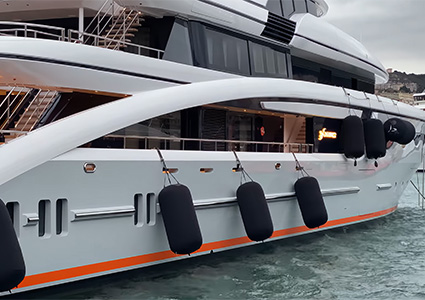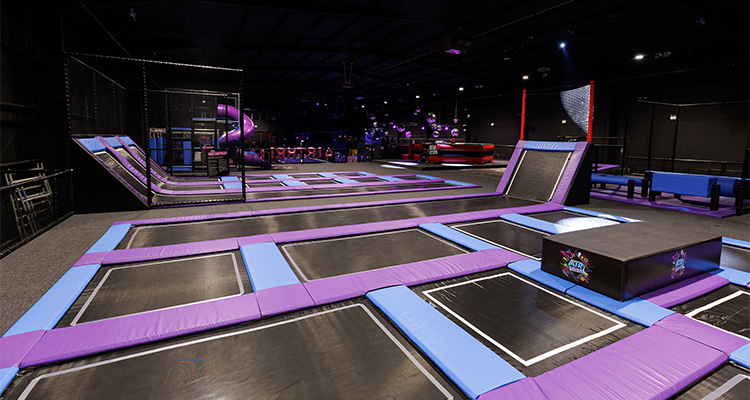How Airquee has grown from manufacturing bouncy castles to medical facilities and beyond
Since acquiring the business in 2002, Owner and CEO Mark John has grown the company from humble beginnings with a team of 30 in Bristol to the largest inflatables manufacturer in Europe with bases in three territories and customers around the globe.
Initially focusing on leisure inflatables, in 2006 the business bought a company in Romania to bring the manufacturing arm of the operation in-house. “Since that time the team has grown to nearly 400 people,” Mark explains. “It has been a process of continual expansion, where we went from 7000 square feet to over 140,000 square feet.” As the operation has expanded, so too has the range of products. “As well as bouncy castles and pool and leisure inflatables the business now boasts a catalogue that includes tents for the medical, humanitarian and defense sectors, components for specialist manufacturing, as well as Airparx products which include trampoline parks and climbing walls.” 
The Romanian acquisition has helped Airquee continue to grow through a period which has seen significant disruptions to global supply chains. Mark outlines how the business mitigated these issues. “We keep our stock levels of raw materials at the maximum possible, which meant a significant initial investment to build the stockpile.” Mark even went as far as to sacrifice his salary in order to seize the opportunities that this presented. Having this buffer has empowered the company to overcome challenges in global supply chains emerging from the pandemic as well as global conflicts such as in Ukraine and Yemen.
It takes efforts such as this, combined with exceptional products, great distribution and customer care, to become a market leader. Outlining how the integration of key technologies has helped Airquee continue to develop innovative products Mark goes on: “We were the first company in the world to use digitally printed bouncy castles and inflatables. This also led to the development of specialist protective coatings.
“We have since purchased a specialized ultra-violet printer to produce a broader range of unique designs. We also have eight Swiss cutting machines, which I was surprised to learn were the same machines used by the Jordan F1 team. These machines are highly specialized and represent a significant investment for the company. We are also looking into CNC sewing machines which would bring further efficiencies to the manufacturing processes.
“Expanding and upgrading these facilities has opened all kinds of doors for us,” Mark explains, “for example, even in technological marketplaces we are now able to supply highly specialized components.”
Always keeping ahead of developing trends as opportunities emerge, Mark identifies renewables as a sector of significant growth in the coming years. “Energy storage could become crucial for our industry generally and this business specifically. Additionally, staying on top of new materials as they emerge will ensure we stay ahead of the market and our competitors.”
Adopting sustainable practices has also seen a boost to margins and efficiency. “Cutting templates”, Mark continues, “have traditionally been a large source of wastage in the industry. Thanks to the level of automation present in the technology in which we have invested, we have managed to save colossal amounts of waste. We have even been able to utilize some of the materials that were previously wasted to develop new products like inflatable ballast.”
 The other area that is important to work on regarding sustainability is implementing systems and programs for logistics. As Mark points out: “These practices are more sustainable and better for the environment, but they also help the bottom line, as reducing waste and building efficiencies into processes reduces costs and can increase margins. It’s also a proactive rather than reactive approach which embeds resilience into the business, readying it for any future challenges. It’s been a pleasant surprise,” Mark says, “seeing all the concurrent benefits that emerge from something that you initially did because it was better for the environment.”
The other area that is important to work on regarding sustainability is implementing systems and programs for logistics. As Mark points out: “These practices are more sustainable and better for the environment, but they also help the bottom line, as reducing waste and building efficiencies into processes reduces costs and can increase margins. It’s also a proactive rather than reactive approach which embeds resilience into the business, readying it for any future challenges. It’s been a pleasant surprise,” Mark says, “seeing all the concurrent benefits that emerge from something that you initially did because it was better for the environment.”
Looking to capitalize on the growth the business is experiencing Mark has big ambitions for Airquee. “We want to reach a turnover of £25 million. This would represent fully realizing the potential of our current factory.” Cutting wastage, creating innovative products and increasing efficiencies are what has grown the business from a small unit in Bristol to a global player operating across multiple competitive markets and has the potential to take the company much further in the coming years.
Seeking to build off recent successes in the US, generating a greater presence in international spaces will be key to achieving these goals. “We will be focusing on the US market, where we see a massive potential. Some smaller projects we have done show there is a demonstrable demand for our products. The Asian market as well, though harder to crack, will be a source of huge opportunities,” Mark adds.
From bouncy castles to temporary emergency medical facilities and beyond, Airquee has transformed from a small operation producing leisure products to the largest manufacturer in Europe of inflatables, boasting a broad catalogue of products that incorporate a range of sectors. Through a strategy which has valued increasing efficiency, eliminating waste, and adapting to opportunities as they arise, Airquee is well positioned to make sure it has the jump on their competition.
